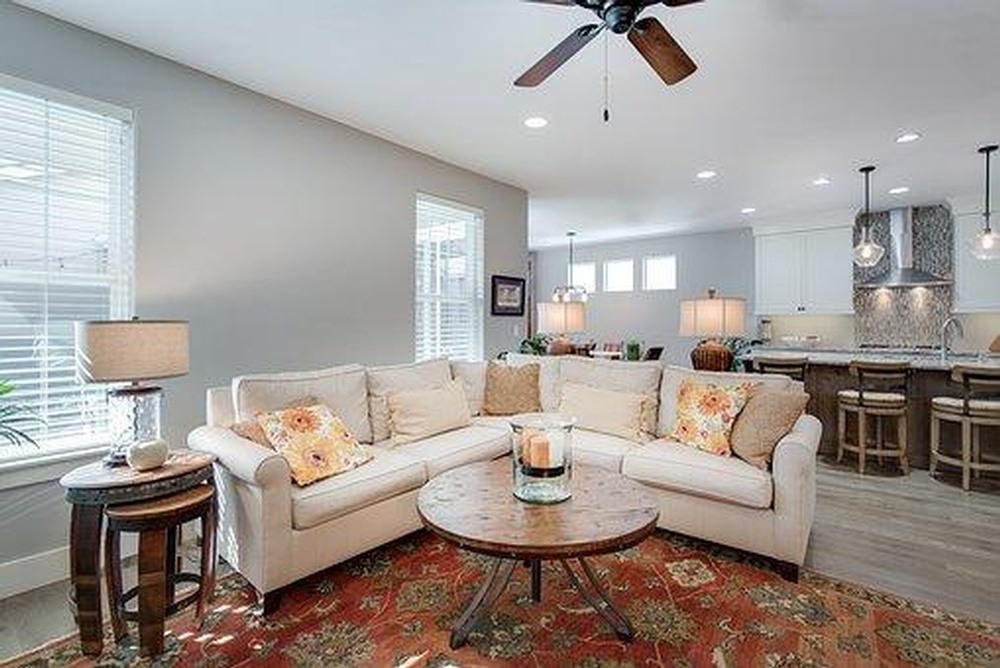Bright Lights for a Safe Home: Tips for Helping Seniors Age in Place Safely

There’s no getting away from the physical deterioration that occurs as people age. While most people find a way to cope with the physical manifestations of aging, many who wish to age at home are unable to do so because physical infirmities simply won’t permit it. Fortunately, technology and the ability to adapt one’s living space for mobility issues can make it considerably easier for older adults to live independently or with family.
One of the most serious threats to a senior’s well-being is inadequate in-home lighting, an important point because studies indicate that a 60-year-old requires three times as much light as a 20-year-old in order to see well enough to be safe. Rather than bathing a senior’s home with a lot of indiscriminate lighting, it’s preferable to approach the problem strategically and efficiently, and still meet an older person’s lighting needs. This helps a senior see better by avoiding the glare and transitional problems to which seniors are especially vulnerable.
Light where it’s needed
Replace incandescent bulbs in rooms where light is needed for reading, dressing, washing, grooming, etc., with LED or compact fluorescent bulbs, which will heighten ambient light efficiently. It will also cut down on glare (a potential danger to senior safety), make it easier to adapt to sudden alterations in brightness, and discriminate between different colors. Plentiful but softer ambient lighting not only improves visual acuity in seniors, but creates a more relaxing living environment.
Consistent lighting
Older adults often have a problem adapting to different light levels and intensity as they move from room to room. Using uniform lighting throughout the house can go a long way toward resolving this problem and creating a safe living space. Programmable smart lighting, which can be operated via smartphone app or through voice control, is one way to provide safe, steady lighting transitions throughout the home. Smart lighting can detect when someone enters and leaves a room and adjust lighting accordingly, an important benefit for an older person who struggles to use and adjust lighting. Consider hiring an electrician to affordably install smart lighting, since this is a dangerous job for a layperson - in Baltimore, Maryland, the average cost of installing outlets, fixtures and switches ranges from $143 to $390.
Natural light
In general, the more natural light in the home, the better. It’s good for human beings, and it provides a plentiful and energy-efficient lighting source. Adapt window treatments so natural light is unimpeded by sheer curtains and easily-opened shades. Exposure to sunlight has a positive effect on one’s mood and personal outlook, which is essential to maintaining a healthy sense of well-being.
Key rooms
Pay particular attention to lighting in the bathroom and kitchen, two rooms where accidents are more likely to occur than other parts of the house. Abundant ambient lighting will make it easier to use kitchen utensils safely (but avoid exposed lamps) and avoid falls in the bathroom, the location of most in-home accidents involving senior citizens. Don’t neglect hallways and any part of the house an older adult might need to navigate at night or in the early morning hours. Consider using motion-activated sensors that turn lights on and off in these places to ensure your older family member has light when she needs it, where she needs it.
Lighting is one of the easier, most affordable adaptations needed to help a senior age in place safely. Maintain consistent lighting from room to room to eliminate falls and other in-home accidents that threaten older people. Using bright and efficient light bulbs can help manage energy costs, as can an intelligent application of smart technology.
By Sharon Wagner-SeniorFriendly.info
Courtesy of Pixabay.com.